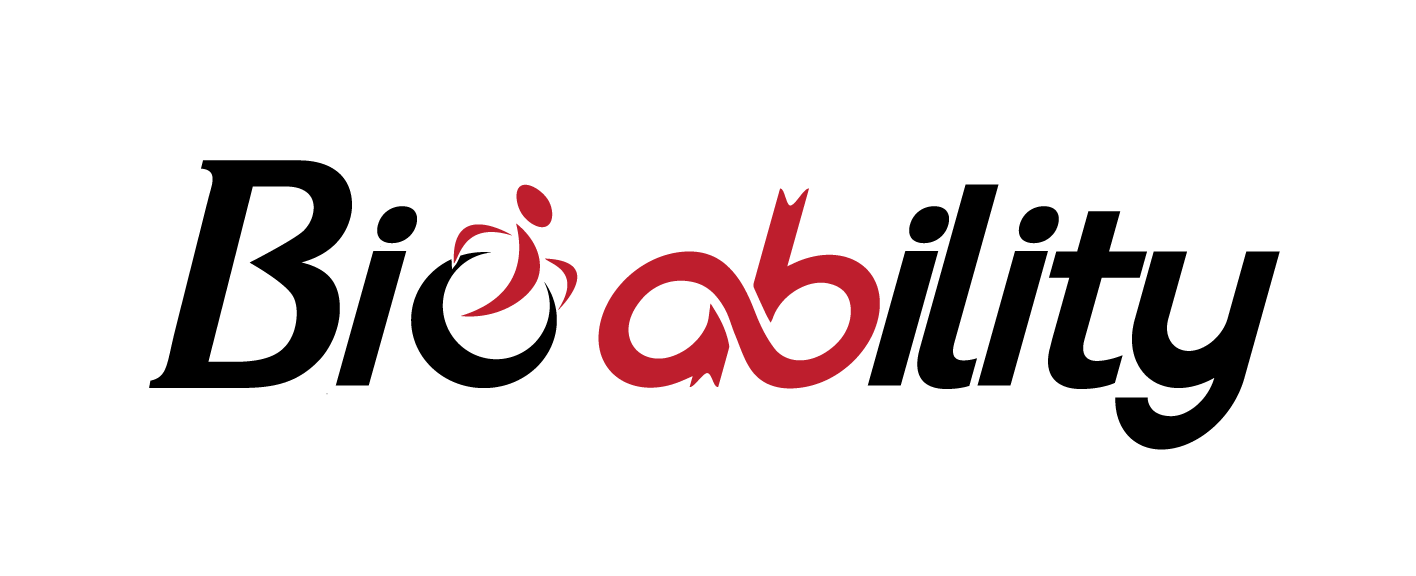February 1, 2024
The Ability Connection
Issue #17
Feb 2 is National Girls and Women in Sports Day
National Girls & Women in Sports Day (NGWSD) began in 1987 as a special day in our nation’s capital to recognize women’s sports. February 7, 2024, marks the 38th annual National Girls & Women in Sports Day (NGWSD). According to the women’s sport foundation, playing sports has many health benefits for women including maintaining a healthy weight, improved fitness, high levels of confidence and self-esteem, a more positive body image and lower levels of depression. Regular physical activity also improves bone and muscle strength which can be lost as we age and affects women more with menopause. Regular exercise improves cholesterol levels, reduces blood pressure, cuts body fat, and lowers blood sugar.
Exercise is important during all phases on a woman’s life including pregnancy and postpartum. According to the American College of Obstetricians and Gynecologists (ACOG), women who exercise during pregnancy have decreased risk of gestational diabetes, cesarean birth and shorter postpartum recovery time.
Exercise during pregnancy can help prepare your body for birth. Other benefits of exercise during pregnancy include:
- Reduced constipation, bloating, swelling and backaches
- Improved mood, posture, muscle tone, strength and endurance
- Reduced rates of gestational diabetes, C-sections and high blood pressure (preeclampsia)
- Healthy weight gain
- Improved stamina and heart health
Physical activity can reduce symptoms of postpartum depression as well as help you with weight loss after the baby is born. According to the American College of Obstetricians and Gynecologists (ACOG), if you had a healthy pregnancy and a normal vaginal delivery, you should be able to start exercising again soon after the baby is born. Usually, it is safe to begin exercising a few days after giving birth—or as soon as you feel ready. If you had a cesarean birth or complications, ask your ob-gyn when it is safe to begin exercising again.
Safety precautions according to the American College of Sports Medicine include:
• Avoid physical activity in the heat, especially with high
humidity. This includes “hot” yoga/pilates.
• Avoid activities with increased fall risk. Including downhill/water skiing, surfing, off-road cycling, horse-back riding and gymnastics.
• Avoid scuba diving, sky diving and other high-risk activities.
• Avoid contact sports or activities with increased risk of abdominal contact/trauma including ice hockey, boxing, soccer and basketball.
• Maintain adequate nutrition and hydration-drink before, during and after physical activity
Bio Ability provides safe exercise opportunities for all special populations including our mothers to be and new mothers. If you would like support with a safe exercise program during or after pregnancy, contact Bio Ability about our Adaptive Fitness Program and classes or ask about one-on-one exercise assistance.
February is American Heart Month
We observe American Heart Month every February to create awareness for heart disease in the United States. Every year more than 600,000 Americans die from heart disease; yet heart disease is largely preventable. According to the National Heart, Lung and Blood Institute, heart disease is a leading cause of death in the United States for both men and women. But you can do a lot to protect your heart and stay healthy.
First, it is important to understand your risk for developing heart disease. Risk factors include high blood pressure, cholesterol, or glucose, being overweight and being physically inactive. You have the power to take action to protect yourself against heart disease. Be sure to work with your doctor to control blood pressure, cholesterol, and blood sugar. Small heart-healthy actions like adding more movement to our day or choosing healthy foods, can have a big impact on protecting our hearts.
If you or someone you love is at risk for developing heart disease and would like support with your journey to reduce your risk, contact Bio Ability regarding the New Year, Healthier You program. This program combines health coaching and adaptive exercise to help you improve your overall health and wellbeing. We can focus on those areas affecting your heart health.
What’s happening?

This two-hour adaptive camp is designed to create a safe and enjoyable space for special needs children while providing the opportunity for much needed alone time for their dedicated caregivers. Spots are limited each month so sign up early. All children are asked to bring a snack and a water bottle.
February Class Schedule
MTW 4:30 pm Adaptive Ninja
MTW 5:30 pm Adaptive Gymnastics
MW 5:30 pm Adaptive Fitness (Teen/Adult)
Tu 930 am Adaptive Homeschool PE
Tu 5:30 pm Adaptive Gymnastics
TH 11:00 am Sensory Gymnastics Class
Sat 1:00 pm Adaptive Fitness (Teen/Adult)
Sat 2:00 pm Functional Fitness for Older Adults
It is always best to find current class availability online at BIO Ability Classes. Some classes may be wait-list only.
Please note this month that there will be no Adaptive Fitness for Teens/Adults or Functional Fitness for Older Adults from Feb 2-11.
Exercise of the Month: Exercise During Pregnancy
Most low impact cardiovascular exercise such as walking, swimming or stationary cycling are safe throughout pregnancy. During pregnancy it is important create body awareness especially preparing for posture changes throughout pregnancy. As your pregnancy progresses you will want to avoid exercises that may put you at high risk for falls due to your changing center of gravity. In the third trimester, you want to avoid lying flat on your back for too long so some exercises may need to be modified. Here are a few other exercises that can be done throughout pregnancy:
Pelvic curl – helps create pelvis posture awareness.
- Lie on your back with your knees bent and feet flat on the ground, about hip-width apart.
- Take a deep breath in to prepare, then exhale as you tuck your pelvis (your “hips”) so that you’re pressing your spine to the floor.
- Keep that tucked position as you continue the exhale and roll through the movement so that you are lifting your spine out of that impression, one vertebra at a time.
- Stop when you reach your shoulder blades.
- Inhale at the top of the movement, then exhale as you fold your body back down, placing one vertebra at a time back onto the floor until you get to your starting position on the back of your pelvis.
- Do 12 to 15 reps. For an added challenge, bring your legs all the way together.
Pelvic brace– can be done throughout pregnancy as long as you don’t have pelvic floor symptoms such as painful intercourse or urinary urgency.
- Lie on your back with your knees bent and feet flat on the ground, about hip-width apart.
- Place your pelvis and low back into a “neutral” position. To find this, make sure you’re resting on the back of your pelvis and creating a small space in your lower back (you should be able to fit a had behind your low back).
- Inhale to prepare, then exhale to perform a Kegel contraction by gently closing the openings (the urethra, the vagina, and anus). As you are performing this contraction, notice how your lower abdominal muscles want to work with that.
- Slightly draw the lower abs in with the Kegel. Inhale, relax the abs and pelvic floor, exhale repeat contraction.
- Do 2 sets of 8 to 15 repetitions of 3- to 5-second holds, once or twice a day.
Squats – strengthen all of the muscles in your lower body.
- Stand in front of a sturdy chair with feet just wider than hip-width apart.
- Squat down like you’re about to sit down but stand back up just as your bottom touches the chair.
- Exhale as you squat; inhale as you stand.
- Do 2 sets of 15 to 20 reps.
Before starting any exercise program, be sure to discuss this with your OB.
Recipe of the Month: Chicken, Sweet Potato and Butternut Squash Hash Recipe (eatright.org)
Ingredients
- 2 medium onions, cut into thin slices
- 1 tablespoon unsalted butter
 3 tablespoons extra-virgin olive oil, divided
3 tablespoons extra-virgin olive oil, divided- 1½ teaspoon kosher salt, divided
- ¾ teaspoon finely ground black pepper, divided
- 1 pound skinless, boneless chicken thighs, cut into 1-inch cubes
- 1 tablespoon fresh, finely chopped sage
- 4 garlic cloves, minced
- 3 cups peeled, cubed sweet potato
- 3 cups peeled, cubed butternut squash
- 2 tablespoons fresh, finely chopped rosemary
Directions
- Preheat oven to 425ºF (218ºC). Five minutes before roasting squash and sweet potatoes, put a nonstick baking pan in the oven.
- In a large frying pan over medium-low heat, heat the butter and 1 tablespoon olive oil. When butter is melted, add the onions, ½ teaspoon kosher salt and ¼ teaspoon finely ground black pepper. Slowly cook over low heat, stirring every few minutes, for about 10 to 15 minutes, until onions are soft and slightly caramelized.
- Add the chicken, sage and garlic to the pan; continue to stir and cook for 15 minutes, until chicken is done and no longer pink. Drain chicken and onion mixture in a colander — do not rinse out the frying pan.
- Toss sweet potatoes, butternut squash, rosemary, 1 teaspoon kosher salt, ½ teaspoon finely ground black pepper and 2 tablespoons extra-virgin olive oil in a large bowl. When nonstick pan has been heated in the oven for about 5 minutes, pour the sweet potato and squash mixture onto the pan. Evenly distribute mixture on pan.
- Place pan back in oven and roast for 15 minutes. Then, flip over cubes and roast for about 5 minutes more.
- In the same frying pan used to caramelize and cook the onions and chicken, turn the heat to high. Transfer the sweet potato and butternut squash cubes from the baking pan to the frying pan for 2 minutes, until browned in color in some spots.
- Add the drained chicken and onions and stir to combine; cook for 2 minutes more. Season to taste and serve.
Nutrition Information
Serving size: 1 cup of vegetables, 3 ounces of chicken (Serves 4)
Calories: 473; Total fat: 20g; Saturated fat: 5g; Cholesterol: 112mg; Sodium: 821mg; Carbohydrates: 52g; Fiber: 8g; Sugars: 5g; Protein: 24g; Potassium: 1,237mg; Phosphorus: 304mg
